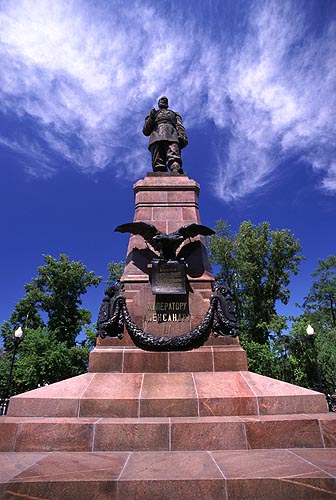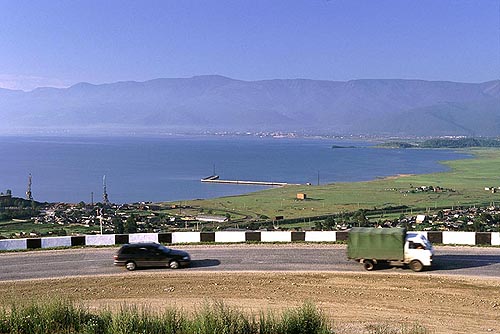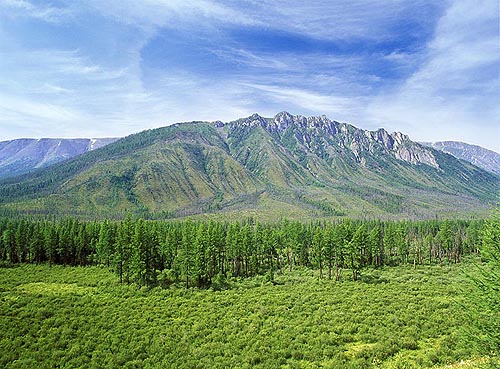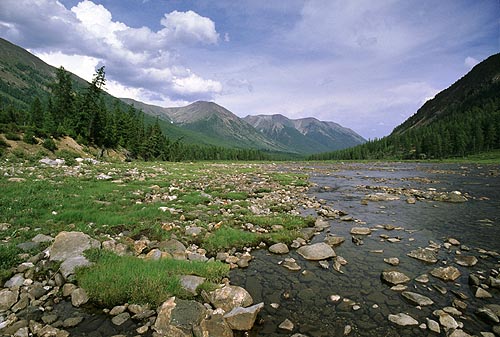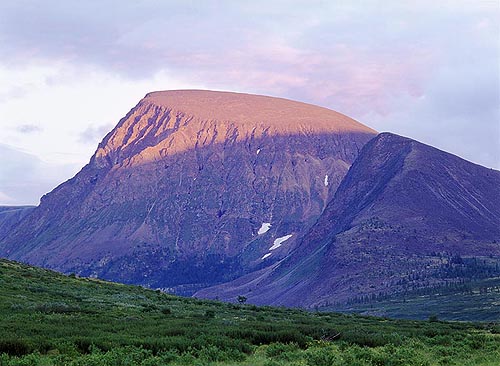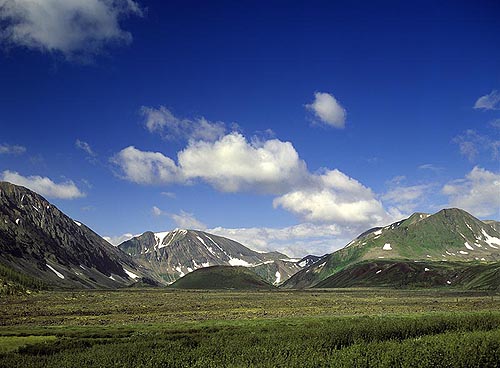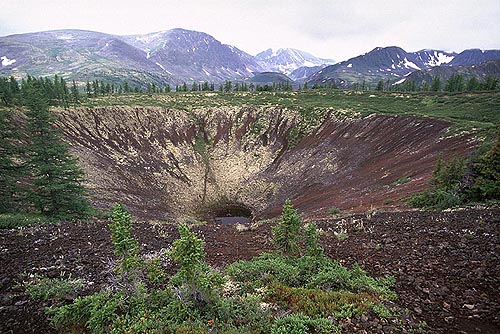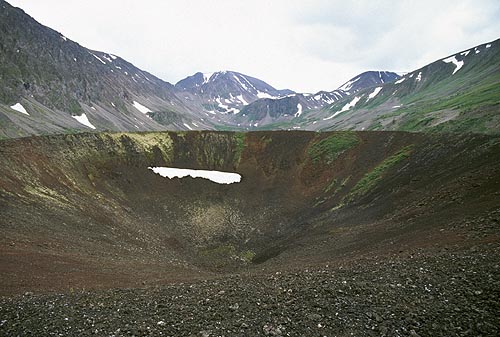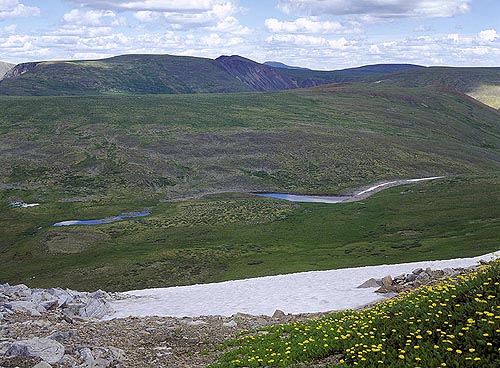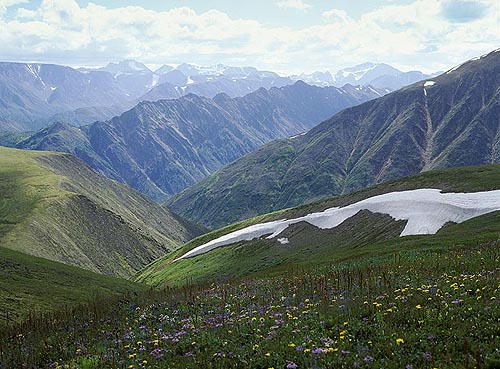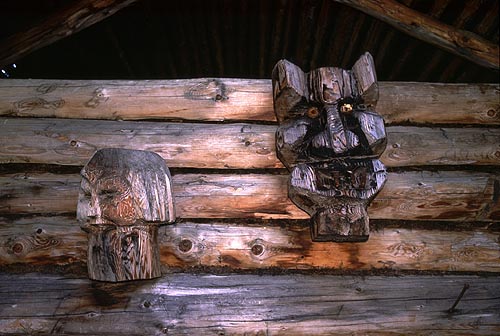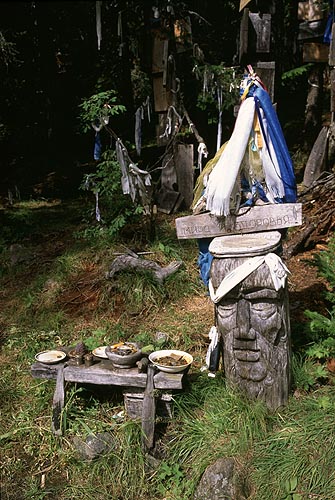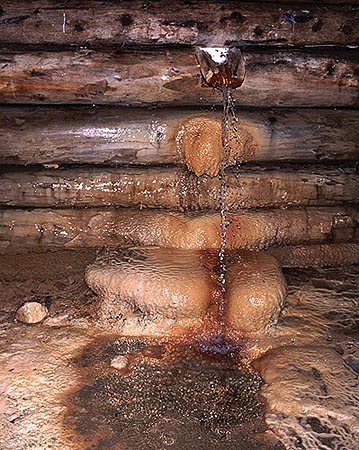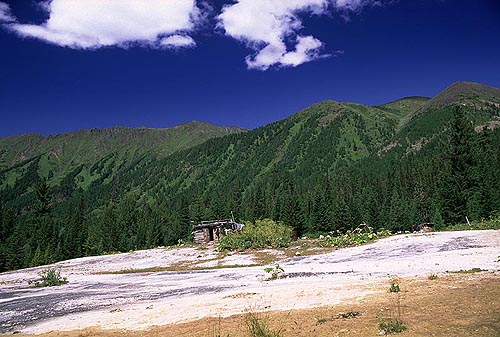Mineral waterThe Choigan Hot Springs range from hot bath tubs to icy-cold Radon waters. Each spring cures selected diseases, some are good for the stomach, others improve eyesight. My body seemed to feel well in the warm water, which has a high mineral content, as the mineral layers in the bath-house demonstrate. The warm water does not smell. The locals rate the cold springs over the hot water, since too much of hot water is not good for health, they say. A matter of taste, isn't it? |
ChoiganA hut on mineral deposits near our camp site. Many locals from Tuva and the Russian part of Mongolia, the Buryat Republic, are using the springs on the borderline between the two regions. Russian tourists also visit the place.
|
